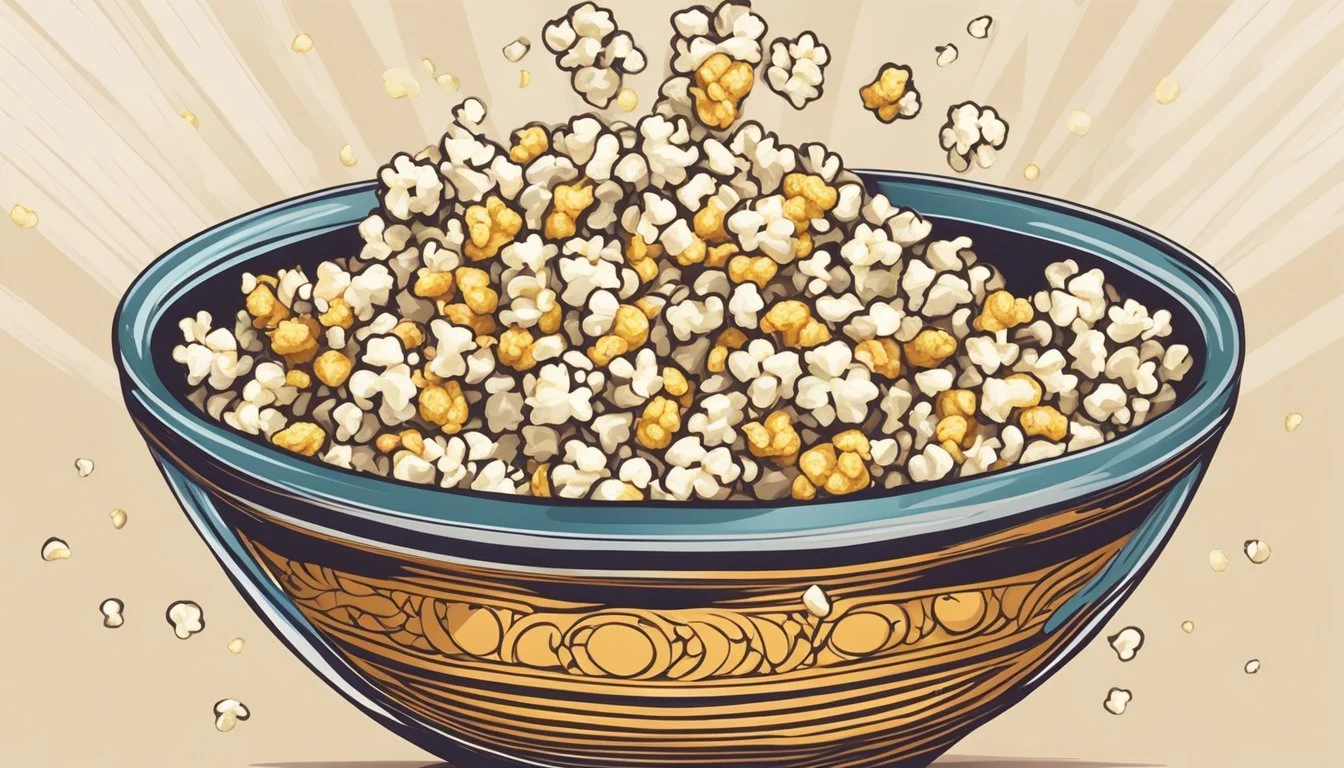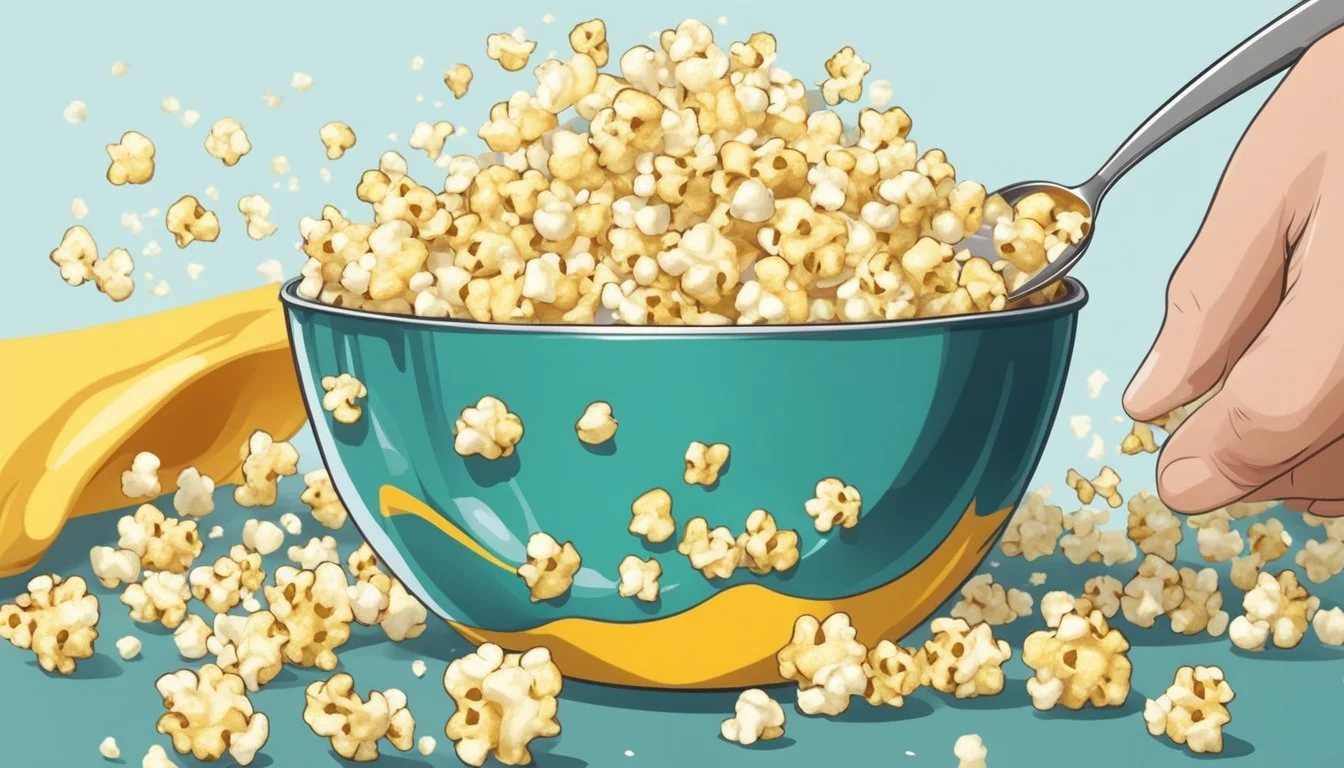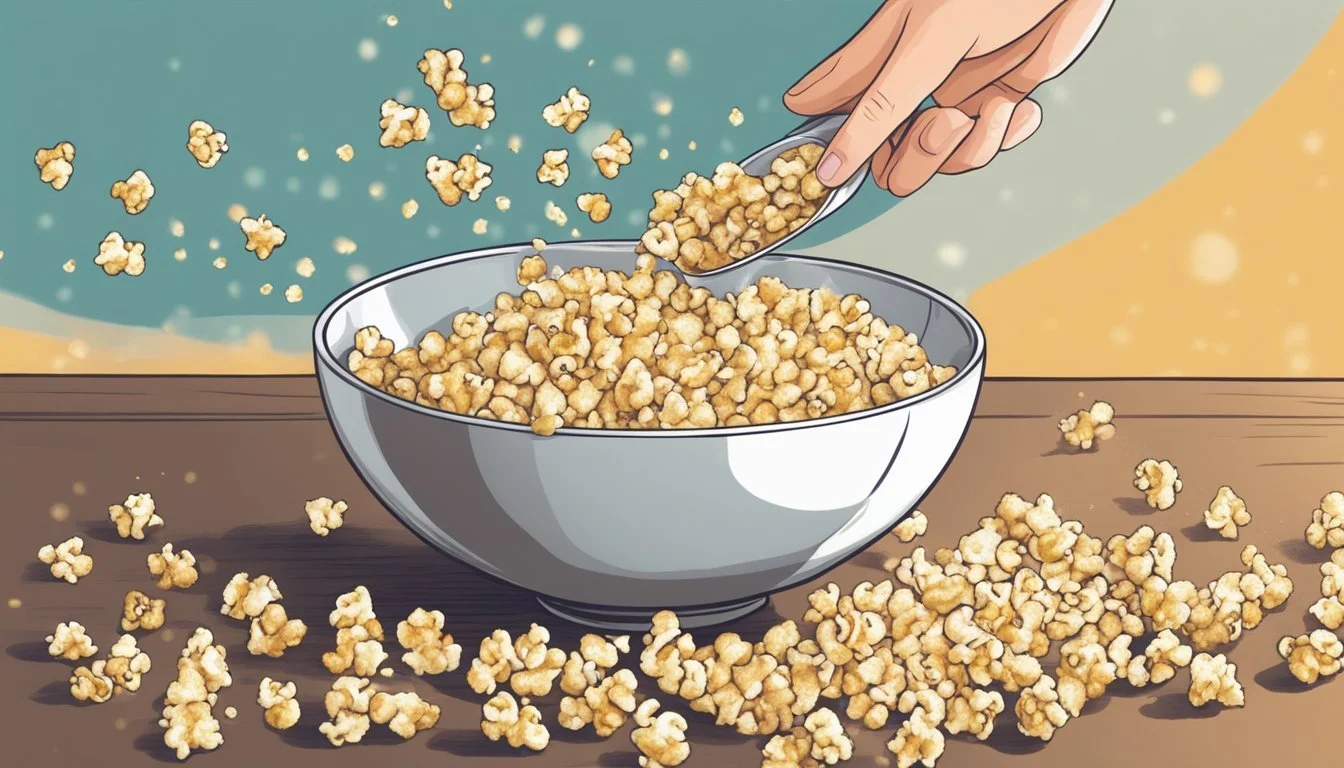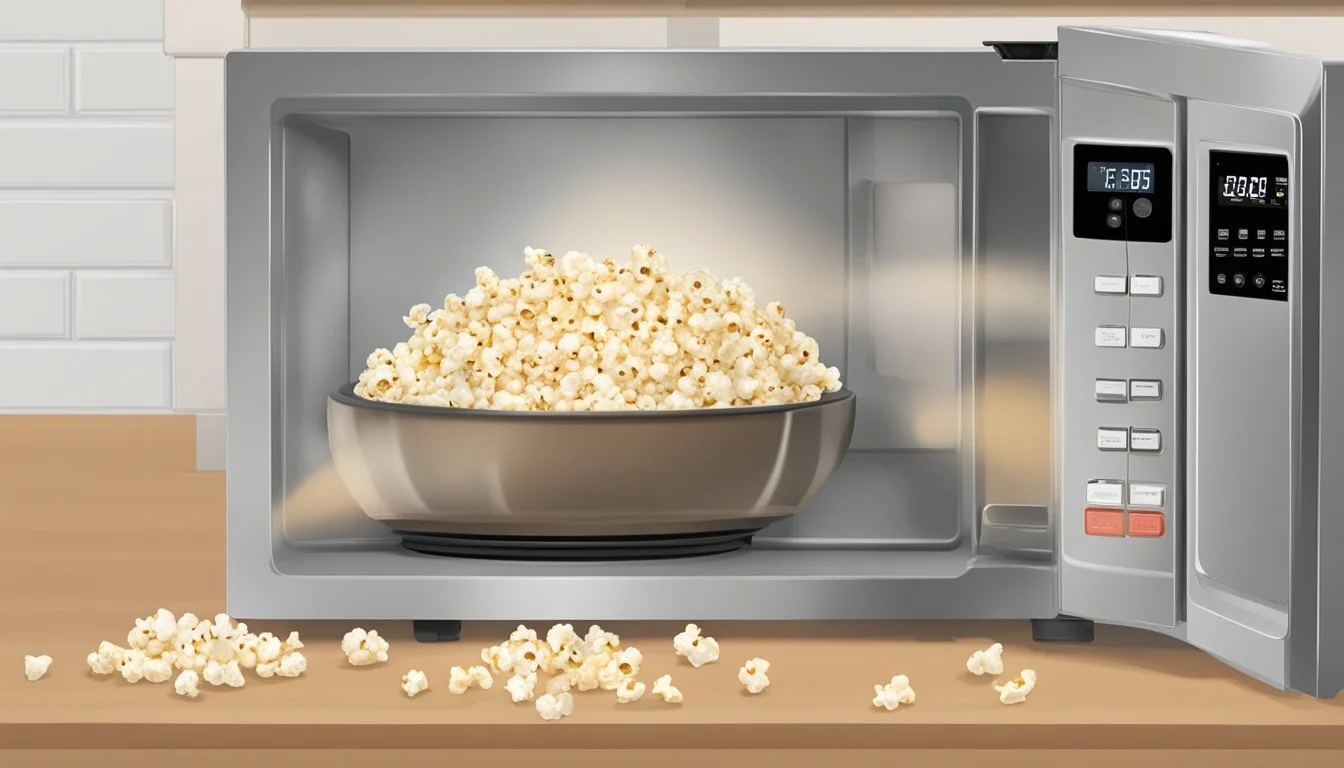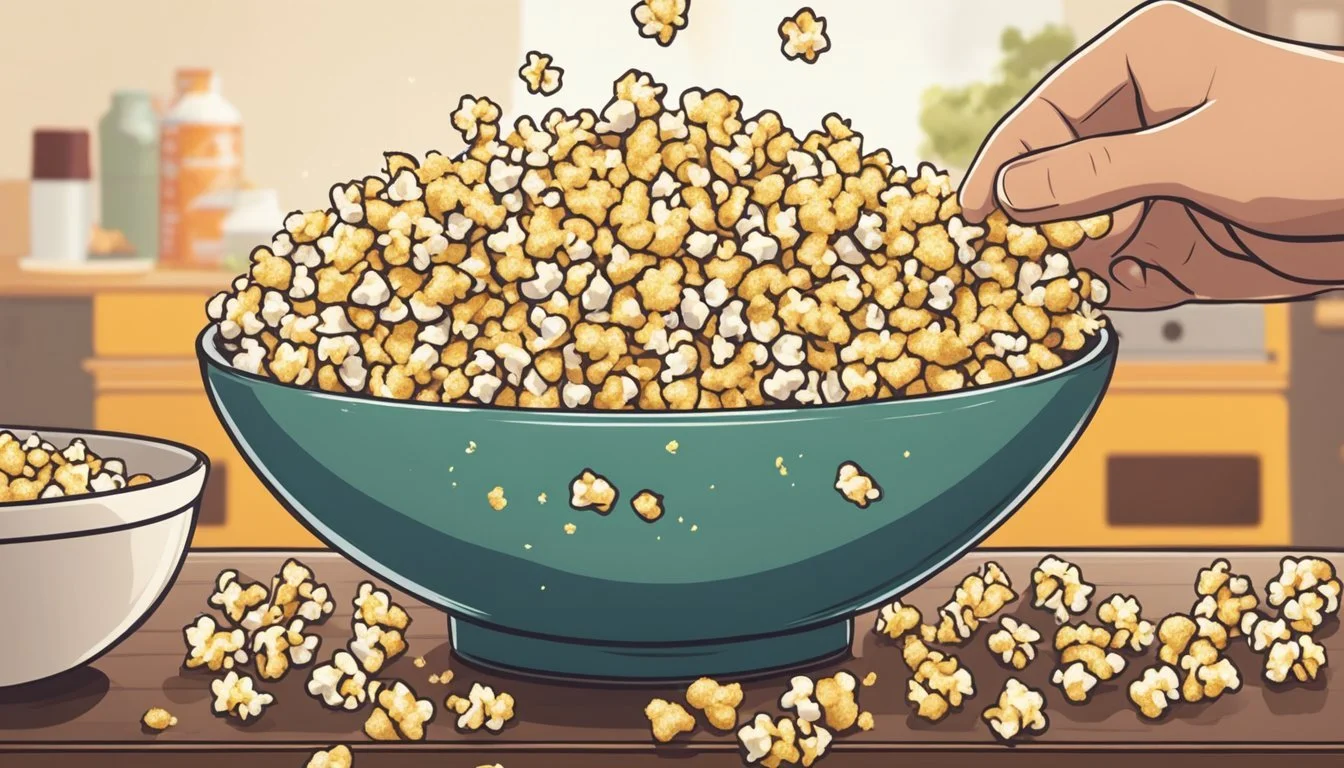Reviving Stale Popcorn
Tips for Crisping Up Your Movie Night Munchies
Popcorn is the quintessential movie night snack enjoyed for its irresistible crunch and ability to take on a variety of flavors, from buttery richness to sweet caramel glaze. However, the disappointment of reaching into a bowl only to find the popcorn has turned stale is an all too common experience. The once fluffy and light kernels become chewy and lackluster, diminishing the enjoyment of the snack.
Fortunately, there are methods to restore popcorn's freshness and revive its satisfying texture. Techniques ranging from a quick oven warm-up to a stovetop refresh can bring life back to this beloved snack. These revitalization strategies are especially valuable for those who hate to waste food or want to get the most out of their snack purchases. By understanding how to rejuvenate stale popcorn, movie night enthusiasts can ensure their snack bowls are always filled with crisp, delectable kernels.
Understanding Stale Popcorn
When popcorn becomes stale, it's not just about a decline in flavor but also pertains to texture and moisture levels. This knowledge is essential for determining if and how stale popcorn can be restored.
The Science Behind Staleness
Stale popcorn occurs when the crisp kernels absorb moisture from the air. Popcorn pops because of the moisture inside each kernel, which turns to steam when heated. Once popped, the fluffy texture is prone to becoming moist again over time as the delicate structure interacts with environmental humidity. The texture changes from crispy to chewy and less enjoyable.
Moisture Gain: Popped kernels that gain moisture from the air lose their crispness.
Moisture Loss: Inversely, popcorn can also become stale due to drying out, losing the initial softness of freshly popped interior.
Moisture Management is thus key to maintaining or restoring the popcorn's ideal texture.
Health Implications of Stale Snacks
From a health perspective, eating stale popcorn isn't typically dangerous, but it is important to consider potential microbial growth if the snacks are left in a moist environment for an extended period.
Microbial Growth: Foods that become moist can harbor bacteria and mold.
Nutritional Value: Generally, the nutritional content does not significantly change when popcorn becomes stale.
Stale popcorn is primarily a quality and sensory issue rather than a health concern in most cases. However, it is prudent to ensure that any method used to revive popcorn does not introduce additional health risks.
Preventative Measures
When it comes to ensuring that popcorn remains fresh and enjoyable for longer, the key lies in how one stores it and the quality of the popcorn kernels chosen.
Proper Storage Techniques
Storage Container: Popcorn remains at its freshest when stored in an airtight container. This helps to keep out moisture and other contaminants that could lead to staleness.
Location: Ideally, this container should be kept in a cool, dry place. The fridge or freezer is not recommended for storing popcorn as the humidity can affect its texture, making it soggy over time.
Not Recommended:
Fridge
Freezer
Recommended:
Airtight container
Cool, dry place
Duration: Popcorn's shelf life can vary, but it generally keeps well for a couple of weeks if stored properly.
Choosing the Right Popcorn Kernels
Kernel Quality: The foundation of good popcorn is quality kernels. Opt for fresh, high-quality kernels, as they are less likely to become stale quickly after popping.
Recipe Considerations: If the popcorn is part of a recipe, such as a cereal mix, ensuring those ingredients are also fresh can help prolong the popcorn's crispness.
Moisture Content: Kernels with the right moisture content will pop well and tend to be fresher, reducing the speed at which the popped popcorn becomes stale.
Reviving Techniques Overview
Reviving stale popcorn effectively hinges on the application of heat to re-crisp the popcorn without burning it. Each method utilizes a common household appliance to achieve this.
Oven Method
To reheat popcorn in the oven, one should preheat the oven to 250°F. Spread the popcorn in an even layer on a baking sheet, then heat for approximately five minutes, watching closely to prevent burning. This method gently warms popcorn, restoring its crunch.
Microwave Method
For the microwave approach, one can place the popcorn in a microwave-safe bowl and cover it with a microwave-safe plate or lid. Reheat in short 30-second intervals, shaking the bowl in between to heat evenly. This is a quick solution when a stove or oven is not an option.
Stovetop Method
Reheating using a pan on the stove is another viable method. One need only add a small amount of oil or butter to a pan, heat it, then add the popcorn, covering with a lid to steam and re-crisp the kernels. After 30 seconds, one can check the popcorn for desired crispiness.
Air Fryer Method
The air fryer offers a modern alternative. One sets the air fryer to 350-400°F and places the popcorn inside for 3-4 minutes. It is important to shake the basket halfway through the process. This method is efficient at removing moisture and can revitalize the popcorn's texture.
Step-by-Step Revival
Reviving stale popcorn is simple with the right technique. This section provides a clear guide for restoring crunchiness using various appliances.
Oven Revival Process
Preheat the oven to 250°F (120°C) to ensure gentle heating.
Spread the popcorn in a single layer on a baking sheet.
Heat for 5 minutes, checking frequently to prevent burning.
Remove from the oven when the popcorn feels crisp.
Microwave Reheating Steps
Place popcorn in a microwave-safe bowl.
Cover with a microwave-safe lid or plate and heat on high for 30 seconds.
Remove and shake the bowl to evenly distribute heat.
Repeat if necessary until desired crispiness is achieved.
Stovetop Refreshing Procedure
Heat a small amount of oil or butter in a pan over medium heat.
Add the stale popcorn and cover with a lid.
Cook for 30 seconds, then remove the lid.
Shake the pan and check for crispiness. Repeat as needed.
Air Fryer Rejuvenation Tips
Preheat the air fryer to 350°F (about 175°C).
Place popcorn in the basket in an even layer.
Air fry for 3-4 minutes, shaking the basket halfway through.
Check for desired crispiness before serving.
Enhancing Flavor and Texture
Reviving stale popcorn effectively requires not only restoration of its original crispy texture but also enhancement of its flavor profile. This can be achieved through careful application of salts and oils, and the addition of butter and various seasonings that complement the popcorn's natural taste.
Using Salts and Oils
To restore the popcorn's texture and enhance its flavor, one may opt to lightly coat it with oil before heating. The ideal oils for popcorn include olive oil or a neutral oil with a high smoke point. A sprinkle of salt can be added pre- or post-heating to bring out the popcorn's inherent flavor.
Oil Type Benefits Olive Oil Adds a subtle, savory note Neutral Oils Allows the natural popcorn flavor to shine through
Butter and Seasoning Applications
Melted butter can provide a rich, indulgent flavor to stale popcorn. It should be drizzled evenly across the popcorn to avoid sogginess. For additional taste, a variety of seasonings can be utilized. The key is to apply seasonings while the popcorn is still warm to ensure they adhere properly.
Butter Application:
Drizzle evenly
Avoid drenching to maintain crispness
Seasoning Tips:
Apply while popcorn is warm
Toss for even distribution
Creative Uses for Revived Popcorn
Reviving stale popcorn not only reduces food waste but also opens up a world of culinary creativity. With revived popcorn, one has the opportunity to transform this humble snack into a variety of innovative dishes and desserts that are sure to enhance any movie night.
Dish Types Incorporating Popcorn
When incorporating revived popcorn into savory dishes, one can consider a range of recipes that add a unique crunch and flavor. Here are a few ideas:
Popcorn Salad Topping: Crunchy popcorn can be used as a surprising and texturally interesting topping on salads.
Soups with Popcorn Croutons: Instead of traditional bread croutons, sprinkle lightly salted popcorn on top of soups for a lighter alternative.
These dish types allow popcorn to add texture and character to everyday meals while providing a resourceful way to use leftovers.
Desserts and Sweet Snack Ideas
For those with a sweet tooth, revived popcorn can be the base for several delicious treats. Consider these dessert options:
Caramel Popcorn Clusters: Mix revived popcorn with a homemade caramel sauce, then form into clusters for a sticky delight.
Chocolate-Coated Popcorn: Drizzle or toss revived popcorn with melted chocolate and allow to cool for a crunchy, sweet snack.
These dessert recipes give new life to popcorn, turning it into an indulgent snack that transcends the usual movie accompaniment.
Conclusion
In the quest to maintain the crispy texture that makes fresh popcorn a game-changer for snack enthusiasts, there are clear and practical steps one can take. Below, one will find a consolidation of the most effective tips for rescuing stale popcorn as well as advice for keeping future batches at peak freshness.
Summary of Tips
To revive stale popcorn, spread it in a single layer on a baking sheet and reheat it in the oven at 250°F for about five minutes.
For a quicker method, place the popcorn in a microwave-safe bag, lightly mist it with water, and microwave on high for up to 30 seconds.
Always monitor the popcorn closely during reheating to prevent burning.
Ensuring Freshness for Future Snacks
Storage is key to maintaining the freshness of popcorn. Store it in an airtight container at room temperature.
Consuming popcorn shortly after popping maximizes its crispy texture.
Avoid exposing popcorn to moisture and humidity, which quickly leaded to staleness.

